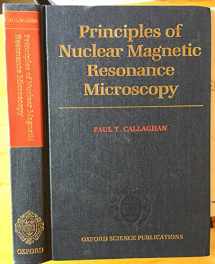
Principles of Nuclear Magnetic Resonance Microscopy
Book details
Summary
Description
Nuclear magnetic resonance is best known for its spectacular utility in medical tomography. However, the method has potential applications in biology, materials science, and chemical physics, some of which are now being realized as laboratory NMR spectrometers are adapted to enable small scale imaging. NMR microscopy has available a rich variety of contrast including molecular specificity and sensitivity to molecular dynamics. In NMR imaging, the signal is acquired in k-space, a dimension which bears a Fourier relationship with the positions of nuclear spins. A dynamic analogue of k-space imaging is the Pulsed Gradient Spin Echo (PGSE) experiment in which the signal is acquired in q-space, conjugate to the distances moved by the spins over a well-defined time interval. Q-space microscopy provides images of the nuclear self-correlation function with a resolution some two orders of magnitude better than is possible in imaging the nuclear density. As well as revealing the spectrum of molecular motion, PGSE NMR can be used to study morphology in porous systems through the influence of motional boundaries. This book explores principles and common themes underlying these two variants of NMR Microscopy, providing many examples of their use. The methods discussed here are of importance in fundamental biological and physical research, as well as having applications in a wide variety of industries, including those concerned with petrochemicals, polymers, biotechnology, food processing, and natural product processing.


We would LOVE it if you could help us and other readers by reviewing the book
Book review



